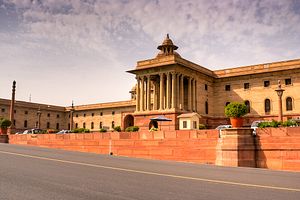On April 14, 2019, reports emerged that India’s Ministry of External Affairs (MEA) had set up a new Indo-Pacific division. The division, headed by Joint Secretary Vikram Doraiswami, will “integrate the Indian Ocean Rim Association, ASEAN Region, and the Quad” under its purview. This move is significant as it bureaucratically aligns the MEA with Prime Minister Narendra Modi’s vision of the Indo-Pacific as spanning “from the shores of Africa to that of the Americas,” making the Indo-Pacific desk the central node to coordinate activities across the various regional desks in this geography. The creation of this desk also signals to India’s partners, particularly the United States, to consider the importance of the western Indian Ocean, currently not included in the U.S. definition of the Indo-Pacific.
As the Indo-Pacific concept becomes a more central part of India’s foreign policy, here are five ideas for this Indo-Pacific desk to consider, all of which aim to advance the shared vision of a “free, open, and inclusive Indo-Pacific” promoted by India, the United States, Japan, and others.
Host a new India-Africa Summit, with the United States as an observer.
In 2008, India hosted the first ever India-Africa Forum Summit (IAFS) in New Delhi, which saw representation from 14 countries of Africa. Since then, an IAFS has been held every three years. India’s engagement under this summit reached a peak in 2015, when representatives from 51 African countries came to New Delhi for the summit. As India looks to deepen its engagement with Africa as part of its Indo-Pacific strategy – noting that India’s definition of the Indo-Pacific region extends to the eastern shores of the African coast – India should look to expand this summit even further by inviting participation from the United States.
The United States held a United States-Africa Leaders Summit in 2014. Moreover, as India pushes the United States to align the geography of the Indo-Pacific with that of India’s, and to recognize India’s interests in the western Indian Ocean, inviting the United States to the IAFS will be a bold step forward.
Lead a discussion of “quality infrastructure” within the Indian Ocean Rim Association.
In May 2015, the Japanese government announced a “Partnership for Quality Infrastructure.” The government describes quality infrastructure as that which is “easy to use and durable, as well as environmentally friendly and disaster resilient.” It also calls for such infrastructure to enhance connectivity, create jobs for local people, increase local skills, and improve people’s lives. India has aligned itself to this idea, making the Delhi Metro an example of such “Quality Infrastructure Investment.” However, given the great infrastructure needs among the member states of IORA, and the prevalence of opaque, unsustainable, low-quality infrastructure financing and investment in the region, India should work to make this a regional framework. Leading a discussion within IORA about “quality infrastructure” will be a positive first step.
Announce next steps in the Asia-Africa Growth Corridor.
In May 2017, the Indian government released a “vision document” for the Asia Africa Growth Corridor (AAGC), which will facilitate economic cooperation between India, Japan, and several countries in Africa. The AAGC had four key components: development and cooperation projects; quality infrastructure and institutional capacity; capacity and skill development; and people-to-people partnerships. However, since the release of the vision document, there has been very little movement on this initiative. The Indo-Pacific desk to re-engage with Japan and the African Union to re-energize this initiative and announce the next steps in advancing the AAGC.
Expand the Milan Naval Exercise to include the U.S., Japan, and France.
India’s Andaman and Nicobar Command holds a biennial naval exercise called “Milan,” which began in 1995. The most recent edition in 2018 saw the participation of 16 foreign nations, all from the wider Indian Ocean Region. The MEA’s Indo-Pacific desk should coordinate with the Andaman and Nicobar Staff, the Integrated Defense Staff Headquarters, and its political-military counterparts in the United States, France, and Japan to include them in a future edition of “Milan.” Doing so would not only further the exercises theme of “Friendship Across the Seas,” but also transform the exercise into a truly Indo-Pacific one.
Plan a joint summit for members of the Indian Ocean Rim Association and the Forum for India-Pacific Islands Cooperation.
Since 2014, India has engaged with two regional intergovernmental organizations to expand cooperation across the Indo-Pacific. The first is the Indian Ocean Rim Association, which includes 22 member-states located in the rim of the Indian Ocean. India attended the first IORA Summit in Jakarta in March 2017. The second is Forum for India-Pacific Islands Cooperation, which includes India and 14 Pacific Island Nations. Under the aegis of FIPIC, India has participated in a summit in Fiji in 2014, and hosted a summit in 2015 in Jaipur, India.
So far, engagements with these groups has been siloed. However, as India looks to deepen its inclusion with “the Indo-Pacific Region – from the shores of Africa to that of the Americas,” it should bring these organizations together. Hosting a summit-level meeting with the member states of both the IORA and FIPIC would demonstrate India’s commitment to the full region and serve as a physical manifestation of the confluence of the two oceans in the Indo-Pacific.
Aman Thakker is a Research Associate at the Wadhwani Chair in U.S.-India Policy Studies at CSIS and a Contributor for The Diplomat.

































